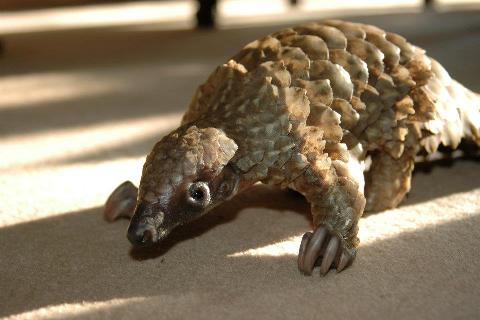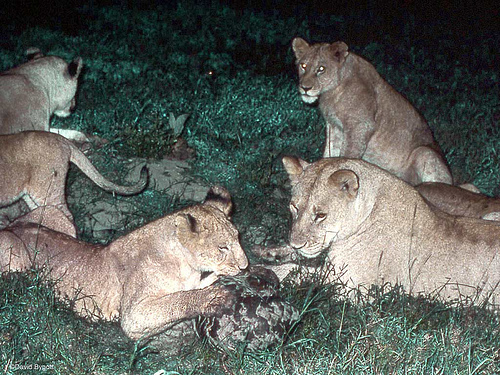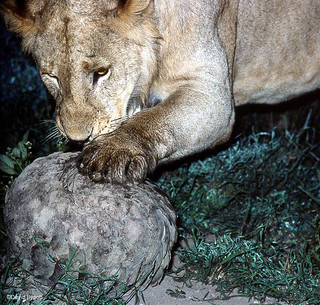Interactions with other
Organisms - The Science Behind Symbiosis
Pangolins play very important roles in helping maintain reasonable ant and termite levels in various ecosystems. Without them, the amount of insects could skyrocket, negatively affecting various other organisms in their habitat, including humans.
These animals are very good at consuming insects, however there are also a few different types of predators that prey on pangolins. Animals that consume them are mainly large cat species, including lions, tigers, leopards, and hyenas. Unknown to a predator looking for a tasty meal, pangolins are extremely well protected because of their scales and ability to roll into a ball. The real threat to them is actually not other wild animals, but humans! Sadly, the poaching of pangolins for their meat and scales is prevalent throughout Africa. Other manmade problems that can injure or kill these animals include electric fences and brush fires. The difficulties that humans present to the species have greatly reduced their numbers and negatively affected the critcal role that pangolins play in their habitat and niche.
Interestingly enough, along with eating termites,
pangolins also have a special relationship with them: using the
termites to clean themselves.
When a pangolin is
 feeding in a termite mound, it is able to lift up its
scales, allowing termites to get underneath them.
After thousands of termites move under the scales,
the pangolin then puts the scales back down, crushing the termites.
The animal will then head into a body of water and
again lift its scales. As the termites are washed away, they act as an
abrasive on the pangolin's skin, helping cleanse it and get rid of any dirt
that might be trapped under its scales. This is remarkably efficient,
as the animal is able to fill its belly and clean itself with the same
organism!
feeding in a termite mound, it is able to lift up its
scales, allowing termites to get underneath them.
After thousands of termites move under the scales,
the pangolin then puts the scales back down, crushing the termites.
The animal will then head into a body of water and
again lift its scales. As the termites are washed away, they act as an
abrasive on the pangolin's skin, helping cleanse it and get rid of any dirt
that might be trapped under its scales. This is remarkably efficient,
as the animal is able to fill its belly and clean itself with the same
organism!
Finally, pangolins have a few organisms, both parasitic and mutualistic, that can live inside them. Many species of parasitic tapeworms and nematodes, such as Brugia malayi have been found within their gut and even lymph systems. Ticks like Amblyomma javanese can parasitize pangolins as well and live under their scales. However, pangolins also possess mutualistic organisms. These are bacteria which live alongside the parasites in their gut. The bacteria aid the animals in breaking down material in their stomach.
Click here to explore what is being done to help save pangolins and find out how you can help!
Back to Homepage


